Andrew Biraj – Lecturer at Pathshala, South Asian Institute of Photography, Dhaka and staff photographer at Reuters since 2008, has been announced the first judge for the MUD Africa Photography/Short Film Competition 2012
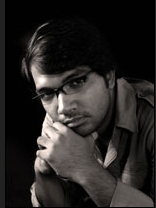
“Throughout the years I have documented numerous stories including political brutality, people?s protest against coal mine, cancer survivors, Jute mill workers, land mine victims, climate refugees and the solitude life of my old grandma”
Andrew holds an Advanced Diploma in Photography from Pathshala in Dhaka and B.A (Hons) in Photography from the University of Bolton, UK in 2005. He has traveled through Afghanistan, Myanmar, Cambodia, Thailand, Singapore, Bangladesh and some parts of Europe to pursue his own work as a social documentary photographer.
His works have been published in Time.com, The New York Times, International Herald Tribune, Lens blog of NYT, 100 Eyes.org, Verve Photo, The Guardian, The Observer Magazine, The Times, The Independent of UK, National Geographic online, Le Monde, Courrier International, Stern, Christian Science Monitor, Washington Post, Boston Globe Big Pictures, Globe and Mail, Sydney Morning Herald, Vancouver Sun, Asian GEO, Himal Southasian, Hindustan Times, New Age, Forum Magazine of Daily Star and in many other international publications.
About the Competition:
MUD Africa is proud to host its first annual Photography/ Short Film Competition 2012.
About MUD/ MALAWI:
MUD Africa (Mobilizing + Uniting Development in Africa www.mudafrica.org) is an NGO working to better the lives of Malawians as advocates of land and housing rights. Malawi is one of the most rapidly urbanizing countries in the world at a rate of 6.3 percent per year. That is three times the global rate and nearly twice that of the African rate. Unfortunately, the economy lacks proportional growth measures necessary to address and reduce poverty levels, and epidemic becoming more visible in the increasing manifestation of informal settlements (slums). Mutually reinforcing conditions of these settlements include poor infrastructure, water and sanitation, substandard housing with insecure tenure and a lack of basic social services. Continue reading “Andrew Biraj first judge for MUD Africa Photography/Short Film Competition 2012”
Tag: Film
Journeying with Mahasveta Devi
This is a sequel to an earlier film ‘Journeying with Mahasveta Devi’, and the second in the trilogy being made on the Magsasay Award winning writer-activist made by Drik India. The viewed and the viewer, the act and the response, form the basic pattern of this film and closes up further with both the inner-self and the outer-self of Mahasveta Devi.
The film has been selected in the international?competitive?section at Mumbai International Film Festival 2012.
Frank Miller and the rise of cryptofascist Hollywood
Subscribe to ShahidulNews
Rick Moody
guardian.co.uk,?Thursday 24 November 2011 23.00 GMT
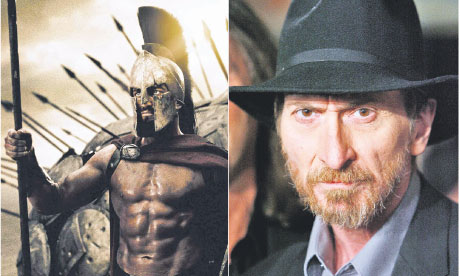
Perhaps you have had this thought before. Perhaps you have had it often. I can remember politics dawning on me while watching a?Steven Seagal vehicle, Under Siege, in 1992. I was in my early 30s.?The film was without redeeming merit ? there’s no other way to put it ? and it was about a “ruthless enemy” and the reimposition of the American social order through violence and rugged individualism. Why had I paid hard-earned money for it? Good question. Before Under Siege, I had a tendency to think action films were?funny. I had a sort of Brechtian relationship to their awfulness. And I was?amused when films themselves recognised the level to which they stooped, as Under Siege assuredly did. Continue reading “Frank Miller and the rise of cryptofascist Hollywood”
Shock & Awe Talk
Subscribe to ShahidulNews

A politically incorrect letter to Tareque Masud
by Mac Haque

?I?ve overcome the blow, I?ve learned to take it well, I only wish my words could just convince myself,that it just wasn?t real. But that?s not the way it feels? ? Jim Croce
Status: Open/Unrestricted
Mood: Meditative/Gloomy/Angry
Music in Background: Do it Again ? Steely Dan
Date/Time- Line: From Then, Now to Never
My Dear Tareque,
Something went awfully wrong on Saturday the 13th of August 2011, and they tell me that you will remain incommunicado?forever. Fair deal pal?that appreciated if not understood; I hope you will take?time out to read this letter. I have deliberately marked it open and unrestricted, so that somewhere down the line somehow, maybe through a gap in the ether, it will be delivered to you unblemished.
You are the savviest of communicators for our generation indeed in the history of Bangladesh. I know for certain that you will continue with your job beyond the 24/07/365 spectral dimension, a rather limited sphere for a genius like you.
It?s this delusion we call?life the Baul in both of us recognizes that stops me from mentioning you in the?past tense. It would be an insult to the living and illuminated spirit that has broken free from a clay tomb. Death is a celebration as much as?life an unending cycle; the entrapped Clay Bird is now free to hover.

As early as 1983 when you were working like an obsessive maniac on?Adam Surat featuring living footages of Lal Miah, you charted your road map in life. You chose an iconoclast, a living legend as your subject. A subject who on the quiet had gone International, and his paintings hung side-by-side with masters like Matisse and Dali, was yet, little known to his own people then, as even today.
Quite characteristically you explained with unending patience, about technological advancements and why your 16 mm celluloid print of?Adam Surat can?t be sent to a festival as the mandatory requirement was U-Matic, NTSC BVU format etc. Very few people in Bangladesh understood what the heck you and I were talking about.
Worse was to follow. Despite my reluctance you bull headedly went ahead and talked to the illiterate proprietor of the Travel Agency where I was working – for?sponsorship. You were shown the door and the same month I quit. In retrospect, not many doors were open to us anyway friend. We had a notorious reputation for speaking our minds and there wasn?t a huge appetite for our?brutal to a fault honesty.
Communications between us were never regular or irregular, but I find it comforting to think that whenever there was a crisis we always met and spent quality time. In winter of 1987 after a whiskey wasted night when we talked only about?financial solvency I had no way of knowing what was really doing overtime in your mind.
So it was more of an embarrassment than a shock that the same morning after waving me goodbye, you tried a hop-skip-and-jump in front of a public bus? Man that was weird. If your ambition was to bag an athletic gold for Bangladesh in the Olympics, you chose a real lousy turf for a practice run?…phew!
Your personal turbulences were?officially over in 1988 when you walked in to my office arm-in-arm with Catherine Shapiere. Before long fate conspired and she was being hounded by people in?absolute power who were not quite able to understand the economics or politics of a visiting American student with a perpetually broke Bangladeshi boyfriend! Love perhaps was an obsolete word back then.
Our last ditch plea to get the US Embassy to help was met by a stern official on the phone. To our horror we learnt that he will ensure Catherine?s passport is returned, but could do nothing about the deportation order. The three of us hugged and cried but our gloom was short lived.
I remember Catherine promising she would return which she did much earlier than expected. And that poem on her adopted motherland written at the Departure lounge of Dhaka Airport after a humiliating interrogation by Immigration Police was bitterly poignant. The two of you were destined to serve the Nation, and do so with the greatest honor and highest of admiration. No power on earth could dare stop that.
I came to know about your nuptials courtesy the grapevine. Months later you enjoyed my quip when I pointed to the framed portrait of the two of you in a wall.?Prem er porey frame ? aha!
Then most annoyingly you vanished without a trace not to return until the early nineties. When you did, you excitedly summoned me to talk about a?treasure trove that you had discovered in New York and NO, you assured me you haven?t robbed a Bank! ?Nevertheless I rushed to see you and Catherine with a hope that..?ahem?.I may end up being an?important side-kick for a soon to be billionaire in Bangladesh.
An hour into the meeting at your Kalabagan hangout with all that hush-hush secrecy, I realized what you have in hand was indeed priceless, but fraught with risk higher than a Bank vault. It was a people?s statement that no political party would be able to stomach. Never spoken but never denied – our lives were at stake.
Reading between the lines, I am sure had it not been on Catherine?s insistence, you wouldn?t have budged to call up Lear Levin. This was based on an emotive flashback by a much inebriated Tareq Ali in New York. And sure enough Lear Levin was on the phone directory. And sure enough so was the cache, preserved in mint condition in his temperature controlled basement. Hours of raw celluloid footage of the Liberation War, not blood or gore but front line cultural activists in action, entertaining guerrillas and common people.
And there was Tareq Bhai, Benu Da, Naila and Shahin Apa, Shopon Da and so many more. From reel, real to surreal, it was as if 1971 had returned, courtesy you – to tell its own tale in 1995.

The two of us have tormented for years whenever the Liberation War came up for discussions. Here we were faced with a new generation and our reminiscences as teenagers growing up in 1971 were rubbished. ?Were we dreaming back then, or are we lying today?? You finally had the answer to my question.?We NOW HAVE THE PROOF Dosto! The next challenge was how to get this across to the people of Bangladesh, the ultimate beneficiary of the treasure.

Muktir Gaan was then an unfolding history of a history in changed times, when we had all but given up on the bloodiest phase in our history. From handling the Censor Board without editing out a single frame, to organizing screening and alternative out-of-the box distribution without?sponsors or patron you masterminded the movie reaching furthest corners of Bangladesh without dithering on your resolve.
Ironically while you received a lot of pats on your back, when it came to real help, you had next to none. Try as you may to hide this my friend, I know for a fact that with all of that happening around you, there were days you went without food. The prohibitive cost of the movie burnt a huge hole in your pocket which was never very deep in the first place.
It was my sheer fortune and destiny to be a tiny piece in a gigantic jig-saw puzzle that was to be the?Muktir Gaan project. I am honored together with other volunteers and friends, to be a roadie and lift and lug the very expensive projector equipments and precious celluloid prints during the initial screenings at Public Library Auditorium.
I am equally honored that you?ordered our friend Shampa Reza and me to be the MC?s for the first screening of?Muktir Gaan to diplomats, bureaucrats and others at the Dhaka Museum Auditorium. The shows at Manikganj, Faridpur and Bhanga where I accompanied you and Catherine in those tumultuous days will forever be etched in my memory.
But then, we had our differences sometimes very heated. While you agreed with me most times, you never accepted my pathological rejection of the status quo or contempt for Culture Vultures and Media Mafia who were hanging around our motley crew for all the wrong reasons.
To quote Bob Marley, I was merely??Oba, ob-serving the hypocrites, as they would mingle with the good people we meet?, so all I could do was watch dejectedly from the periphery and take another toke of Sinsemilia! You are the superior being. You could hear history calling, you could hear the peoples cry when defeat after defeat, our senses had gone numb.
And then it was?Matir Moyna (Clay Bird) and Cannes in 2002. You firmly placed Bangladesh in the International Cinema map. Everything was to change, except you my dear friend. Your dynamism was infectious as usual, but you remained the forever approachable Tareque Masud.
I thank God for that. Your head didn?t outgrow your shoulders. You had no pretensions to be a Ray or Kiarostami or stoop to the perverted commercial decadence of a Farooki??..who?
Last if not the least?Dosto?Runway was awesome and I don?t know if I thanked you enough for the peek preview at your house last year.
Catch up with you soon.
Salutes – my comrade in thoughts.
Cheers!
Mac
PS. I have not been able to go see Catherine and Nishad. I don?t know what to tell them about your?disappearance when enough has already been said.

New Age XTRA. Print Version. Friday, 26th August 2011
The Mexican suitcase
Subscribe to ShahidulNews
![]()
Trisha Ziff is a curator of photography and documentary film maker whose films, focus on the photographic image. A Guggenheim scholar, her exhibitions have been seen at major international museums including: Victoria & Albert Museum, London; California Museum of Photography, international Center for Photography New York and Centro de la Imagen Mexico City. Her exhibitions have looked at Mexican photography, the event of Bloody Sunday in Ireland, Hidden Truths and the famous image of Che Guevara, by Korda.
Message from Trisha:
My film, The Mexican Suitcase, is in DOCUWEEKS! This means that after screenings in New York and Los Angeles we’ll have accreditation giving us the possibility of being short listed for an Oscar nomination! Our film will be at the IFC cinemas in New York and Laemmle 5 in LA with the other DOCUWEEKS films.
The Mexican Suitcase is a 90 minute feature documentary that tells the extraordinary story of the recovery of 4,500 negatives taken by photographers Robert Capa, Gerda Taro and David Seymour during the Spanish Civil War, with an extraordinary score by composer, Michael Nyman. The film reveals the story of the journey of these lost negatives from France to Mexico. I became involved in the story early on and was able to recover the negatives for the families of the photographers and personally returned them to their estates in New York. The story was on the front page of newspapers the world over… Finally, I was able to secure the rights to make this film and three years later, here it is!! The film is getting recognition, being seen at festivals as Karlovy Vary, San Sebastian, Morelia FF, LALIFF,DOCMIAMI and Dubai FF and we are still waiting to hear from many others.
DOCUWEEKS is unique. It gives us this incredible opportunity for an Oscar nomination run. However, to do this we need to raise the necessary funds. This is where you come in! Friends of our film.
DOCUWEEKS is expensive. We have had to pay our percentage of participipating, make a trailer, poster, postcards and hire a publicist! it all adds up to $45,000. We have received some initial donations and generous in-kind support too but we still need to raise a further $20,000. Every dollar helps!
The Mexican Suitcase, is a film about photography. Pictures taken by photographers who would become icons of the twentieth century – They photographed with a Leica and changed the way we saw war. All three would die while documenting wars. The Mexican Suitcase tells their story. It is is also a film about the power of memory. It’s a great story and asks… Who owns our histories? Why does the past matter today?
Funds raised by Kickstarter will be used only to help the film with DOCUWEEKS in Los Angeles and New York. As a result of these 2 week screenings, The Mexican Suitcase will qualify for academy consideration. Help us please to reach our goal and take this opportunity to the next level so we can be shortlisted for Oscar nomination.
Trisha Ziff – Director.
Tedx Ramallah
Subscribe to ShahidulNews
![]()
Given the recent deaths of film makers Tareque Masud and Mishuk Munier, this powerful affirmation of the power of film can be an inspiration to us all
And hip hop used as never before: Believe me this is one you don’t to miss.
Drik mourns
Subscribe to ShahidulNews
Tareque Masud and Mishuk Munier amongst five killed in road accident.
Drik mourns the death of two dear friends, the injuries of three others and the numerous deaths of their colleagues and the thousands of uncounted others who regularly die as a result of negligence, corruption and the wanton irresponsibility of those who are in charge of keeping our roads safe.

Tareque Masud, one of the finest film makers this nation has produced. Mishuk Munier, a talented cameraperson and a media professional who had both the dreams and the ability to change the way reporting was done, died a brutal death as they were returning to Dhaka having chosen the location for their next film.
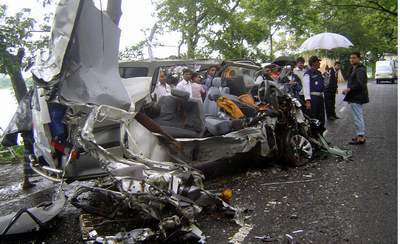
Catherine,?Tareque’s equally talented wife, the producer of the Oscar nominated film Matir Moina, artist Dhali Al Mamoon, who had given the inaugural Golam Kasem Daddy lecture on Drik’s 20th anniversary, and his painter wife Dilara Begum Jolly are in hospital recovering from multiple injuries. Dhali’s condition is critical.
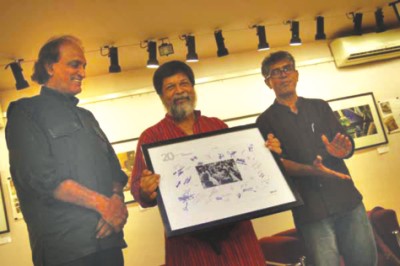
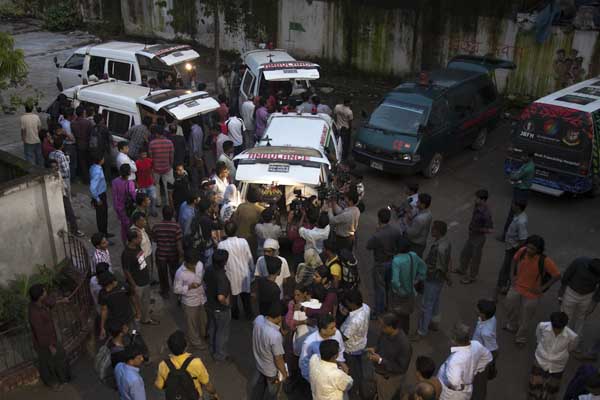

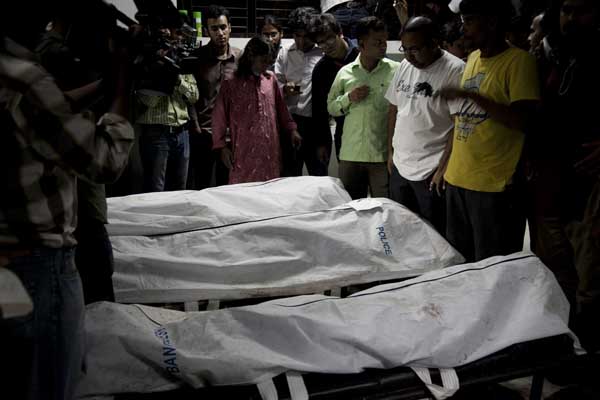
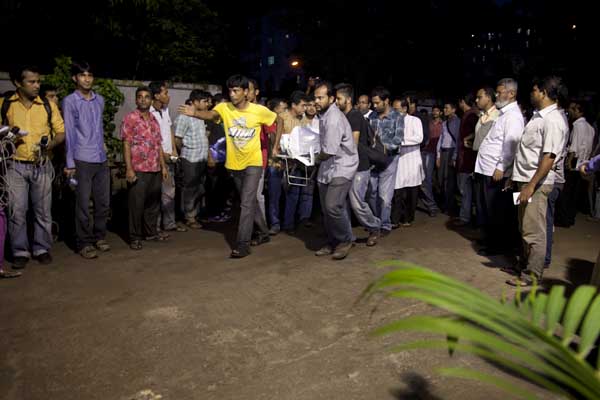
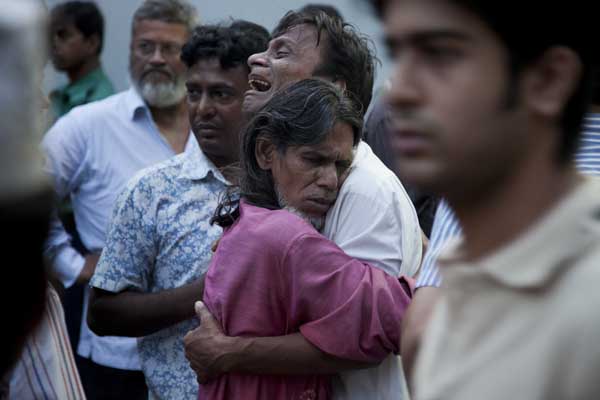
Obituary on Guardian UK
The Great Imitator
Subscribe to ShahidulNews
A fllm by?Atul Loke,?the talented photojournalist from India.
By the mid 1960s, Charlie Chaplin – the man George Bernard Shaw called ‘the only genius to come out of the movie industry’ – was well into the twilight of his 75 year career. Having directed, produced, acted, edited and written sound scores for hundreds of films going back to 1914, Charlie Chaplin was a world-wide superstar. But it wasn’t until 1966 that a young Ashok S. Aswani, now an Ayurvedic practitioner form the town of Adipur in Gujarat, first laid eyes on the man that was to become his hero.
Ashok was cycling to his job as a typist when he saw a poster for the film The Gold Rush – the film that Chaplin himself said he would most like to be remembered for. ‘I was wonderstruck. I found his dress and look fascinating. How does the man bend his legs like that?’. Ashok got off his bike and gaped at the poster for 10 minutes.He forgot about his job, bought a ticket and went in. ‘A whole new world of cinema opened up for me. The music, the technique, the photography was all so different! And I thought, is Chaplin an actor or a magician? I fell off my seat laughing in the darkness.’ That day, Mr Aswani watched all four showings of The Gold Rush. He was fired later that day. ‘I lost my job, but I gained Chaplin.’Returning to Adipur in 1973, Dr. Aswani formed the Charlie Circle, a society dedicated to the appreciation of Charlie Chaplin. He became an Ayurvedic practitioner, handing out free Chaplin DVDs to patients as part of his holistic remedies.
Over time the Charlie circle has grown. More than 100 people gathered in 2010 for the most recent celebration of Charlie Chaplin’s birthday, even though temperatures in Gujarat rose to over 46 degrees.
There were girls and boys, men and women, all parading through the streets of Adipur dressed up like Chaplin’s legendary tramp character – toothbrush moustache, bowler hat, scruffy black suit, cane and that familiar gait, so lovingly taught to members of the Circle by Dr. Aswani.
Every day members of the Charlie Circle meet at a photo shop to discuss Chaplin and watch his movies. Dr. Aswani also teaches members how to act and walk like Charlie, all under the watchful gaze of a life-size Charlie Chaplin cutout. ‘When Chaplin died in 1977, I was devastated. I wept like a kid. I feel he should still be alive. He was the greatest man on the Earth. He was a good musician, good director, good editor, good actor, good writer, good mime artist,” Dr. Aswani says.
Mrs. Aswani says how people refer to her husband simply as ‘The Charlie doctor’. ‘He loves Charlie, he gets up and it’s all Charlie. He never tries to be Charlie. It’s just in him.’
